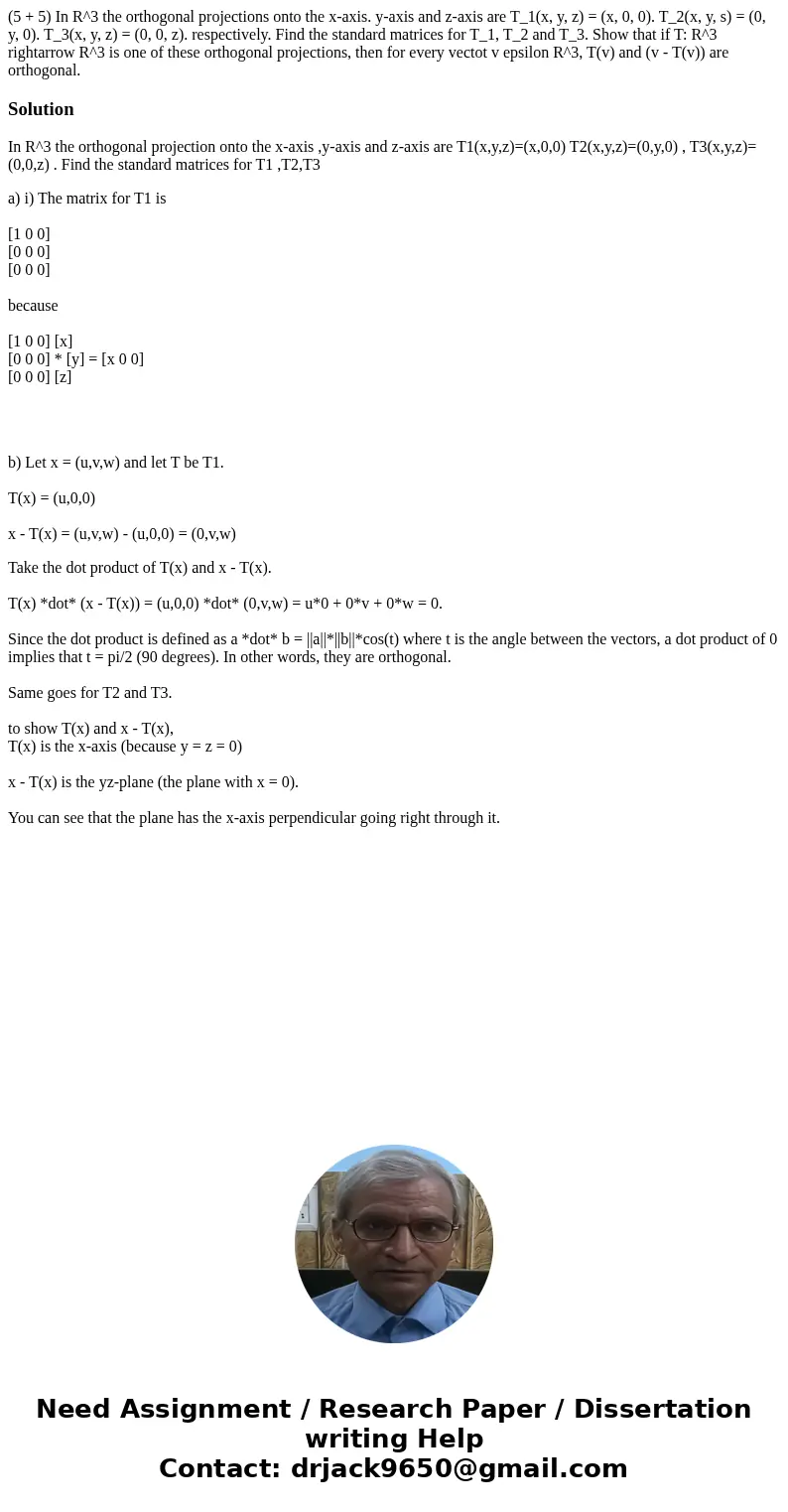5 5 In R3 the orthogonal projections onto the xaxis yaxis a
Solution
In R^3 the orthogonal projection onto the x-axis ,y-axis and z-axis are T1(x,y,z)=(x,0,0) T2(x,y,z)=(0,y,0) , T3(x,y,z)=(0,0,z) . Find the standard matrices for T1 ,T2,T3
a) i) The matrix for T1 is
[1 0 0]
[0 0 0]
[0 0 0]
because
[1 0 0] [x]
[0 0 0] * [y] = [x 0 0]
[0 0 0] [z]
b) Let x = (u,v,w) and let T be T1.
T(x) = (u,0,0)
x - T(x) = (u,v,w) - (u,0,0) = (0,v,w)
Take the dot product of T(x) and x - T(x).
T(x) *dot* (x - T(x)) = (u,0,0) *dot* (0,v,w) = u*0 + 0*v + 0*w = 0.
Since the dot product is defined as a *dot* b = ||a||*||b||*cos(t) where t is the angle between the vectors, a dot product of 0 implies that t = pi/2 (90 degrees). In other words, they are orthogonal.
Same goes for T2 and T3.
to show T(x) and x - T(x),
T(x) is the x-axis (because y = z = 0)
x - T(x) is the yz-plane (the plane with x = 0).
You can see that the plane has the x-axis perpendicular going right through it.

 Homework Sourse
Homework Sourse